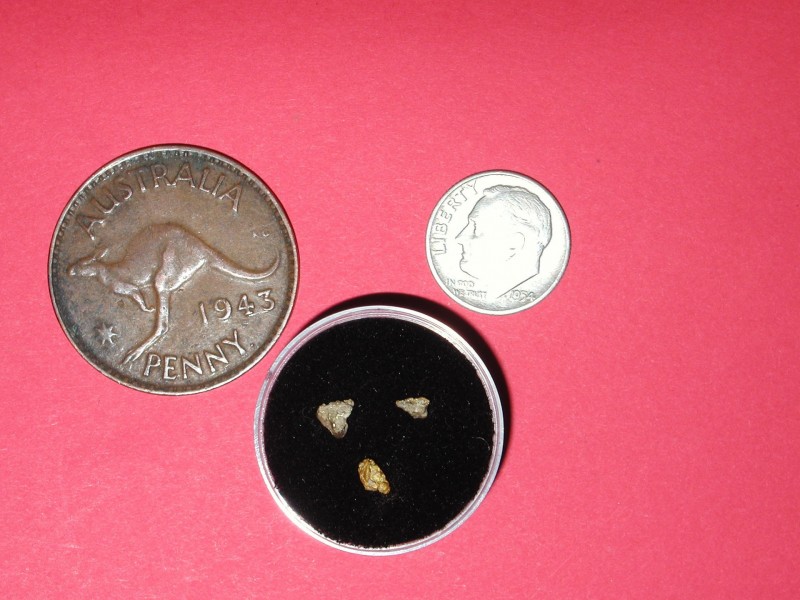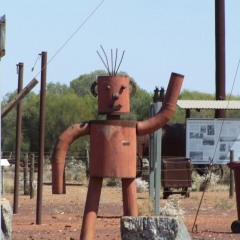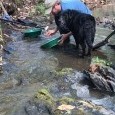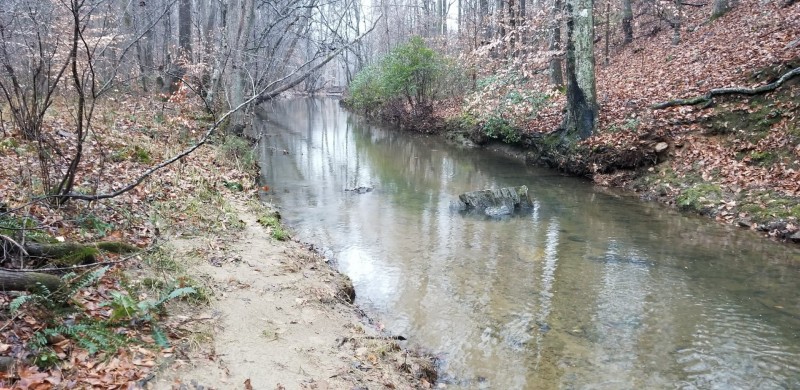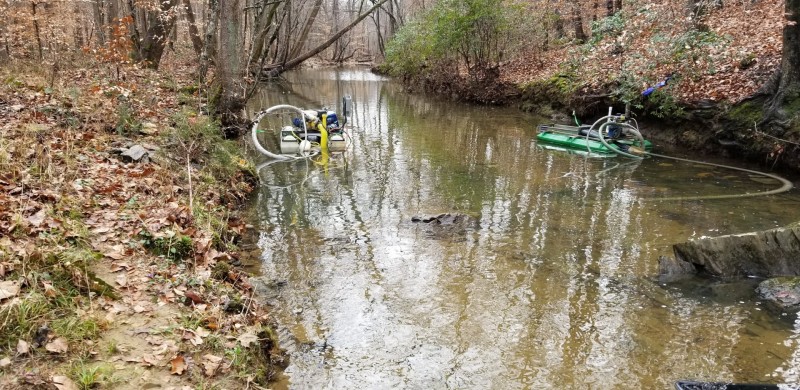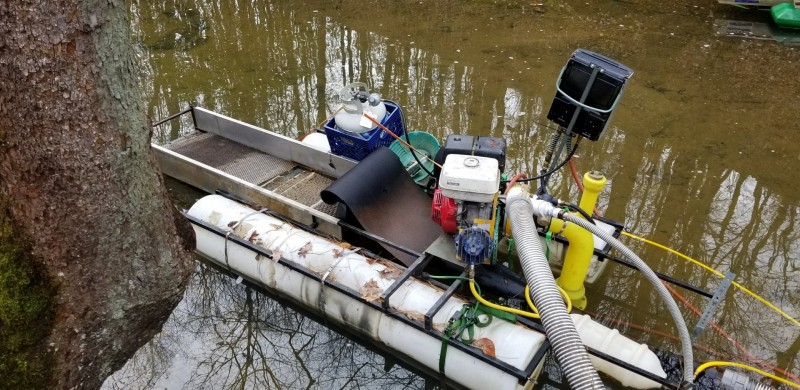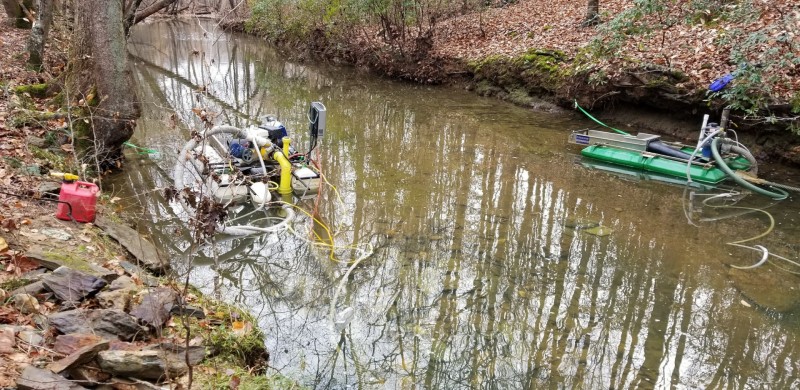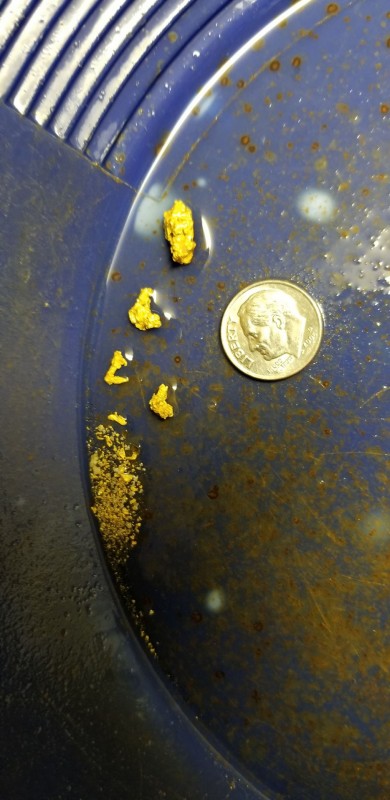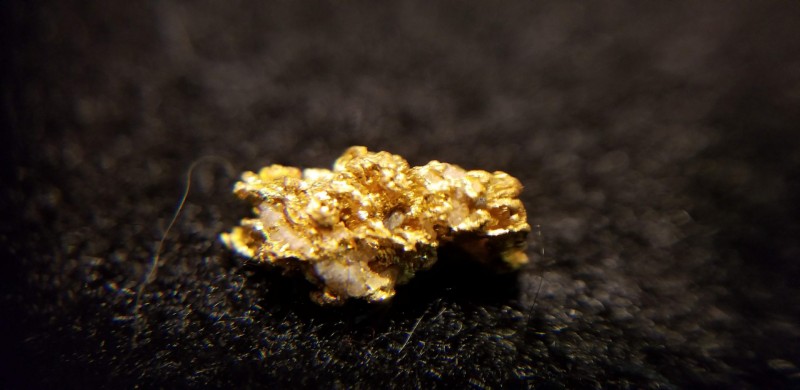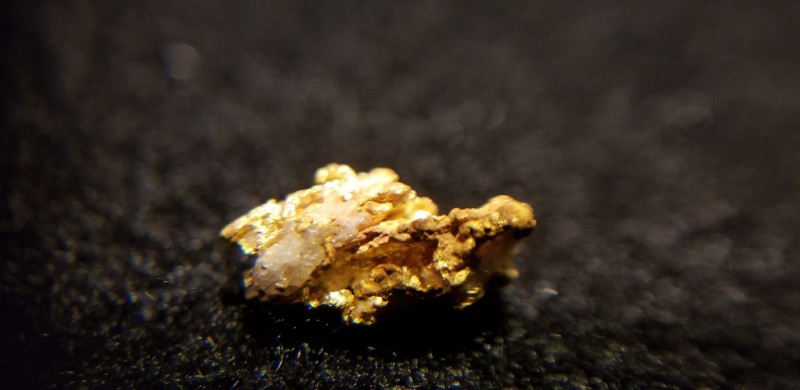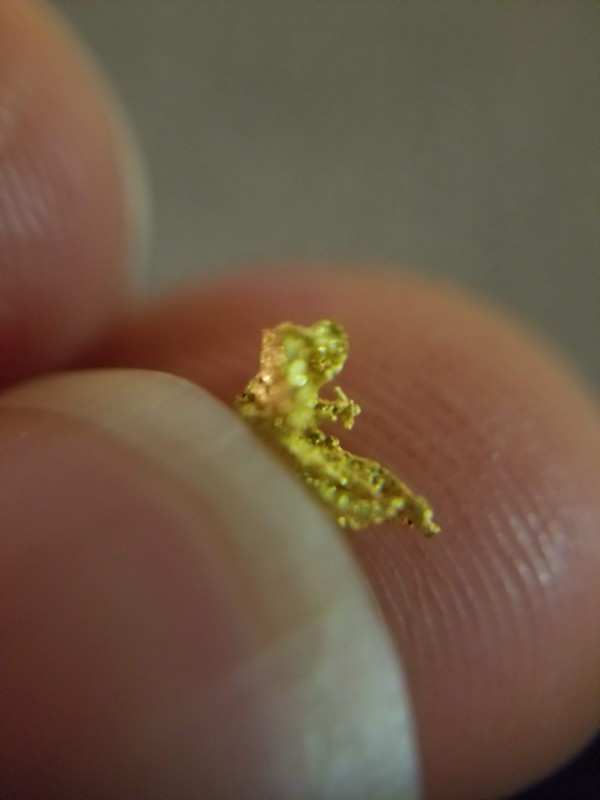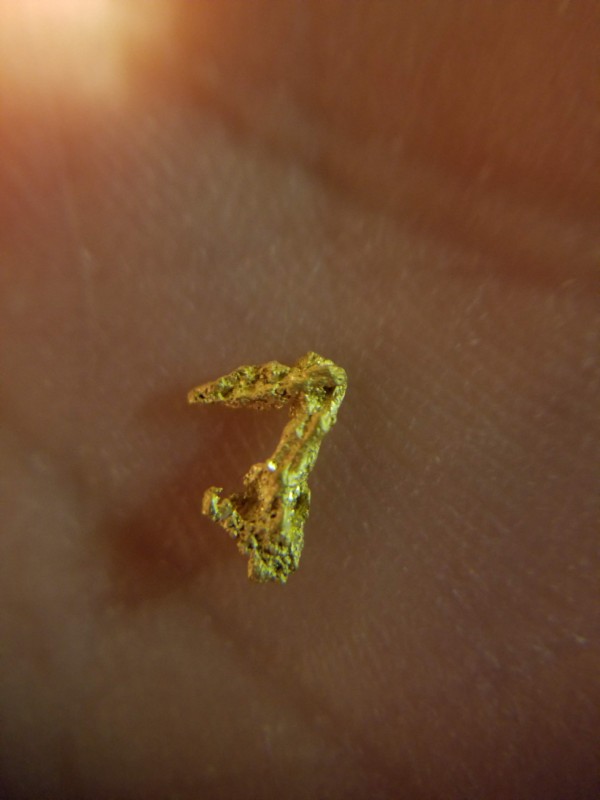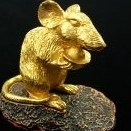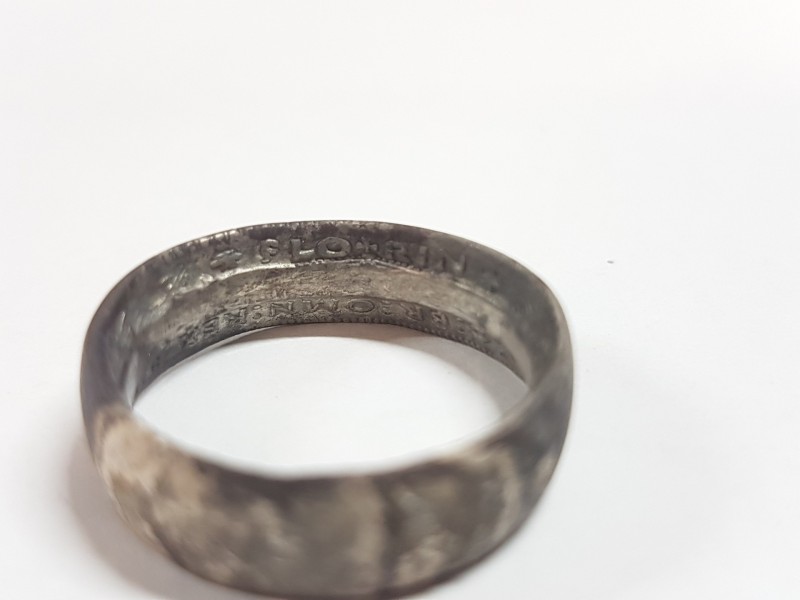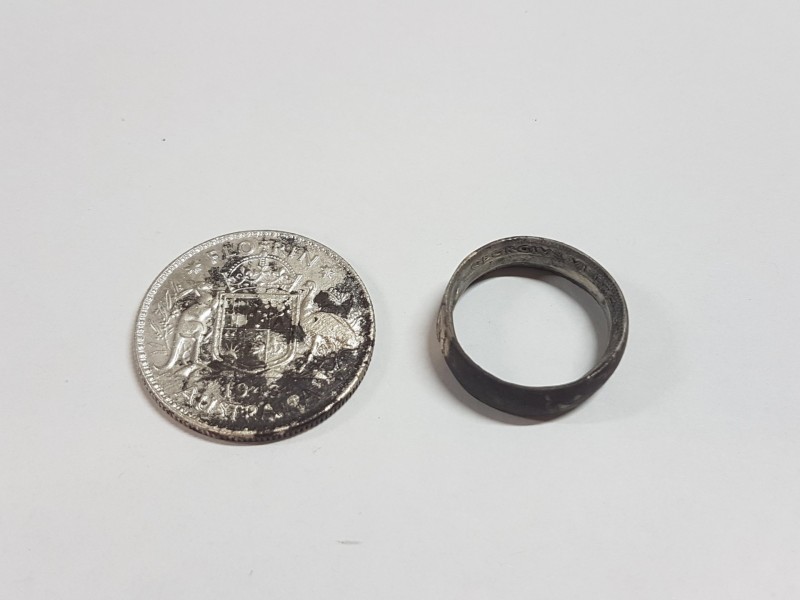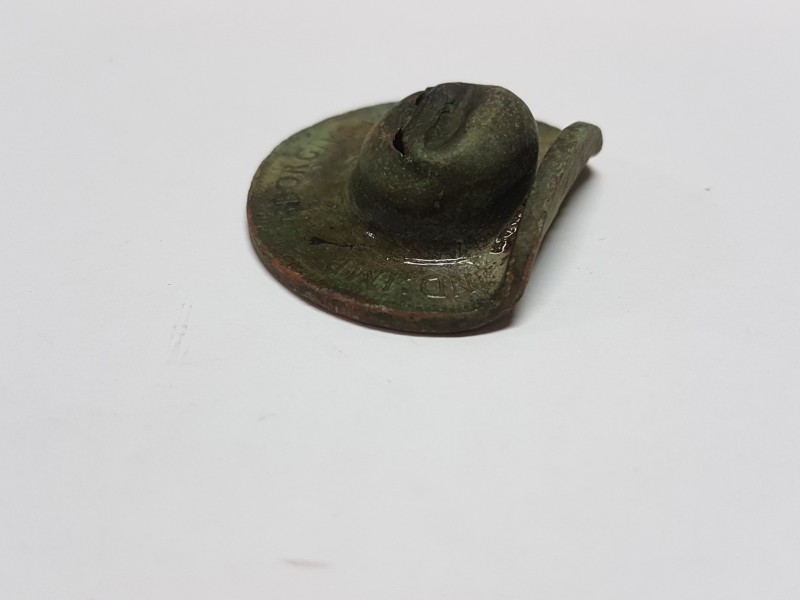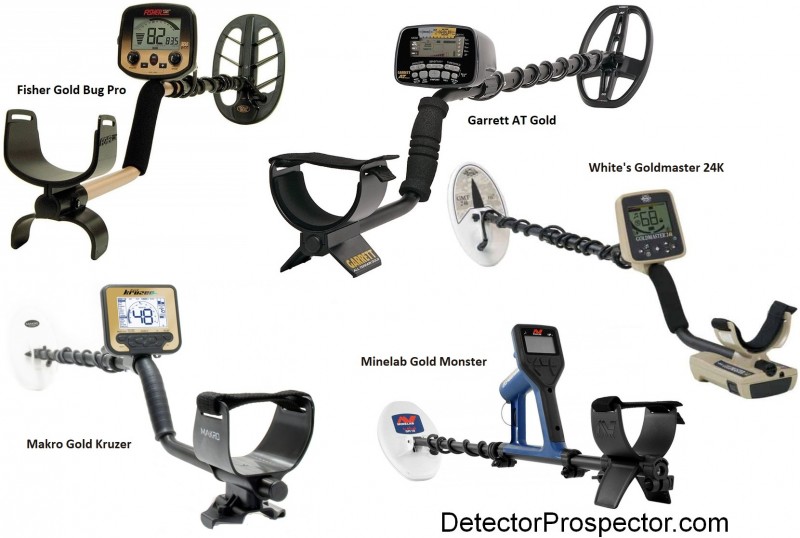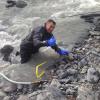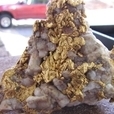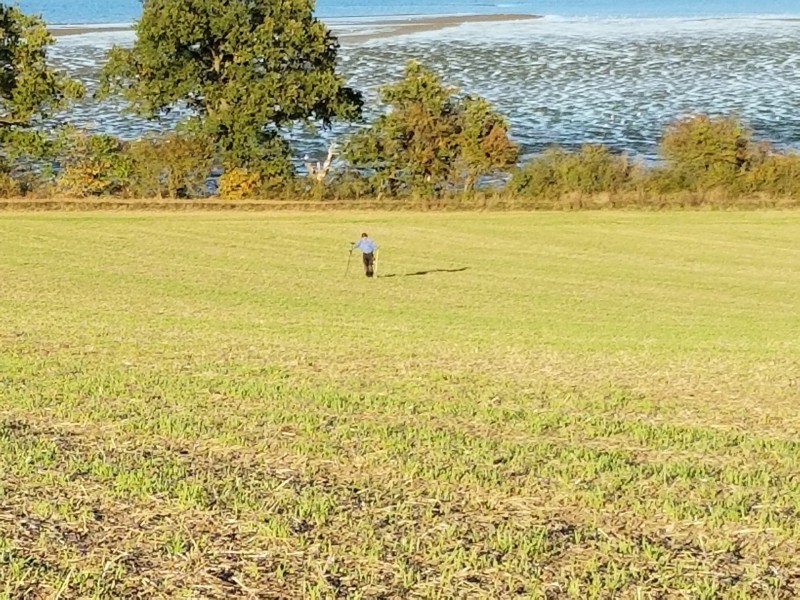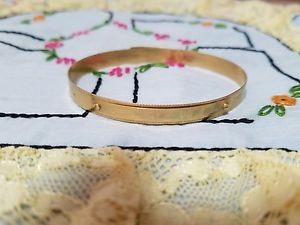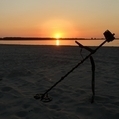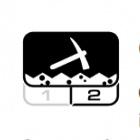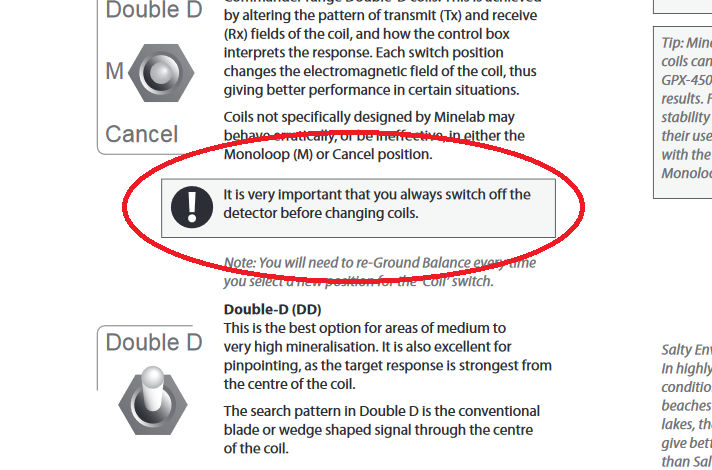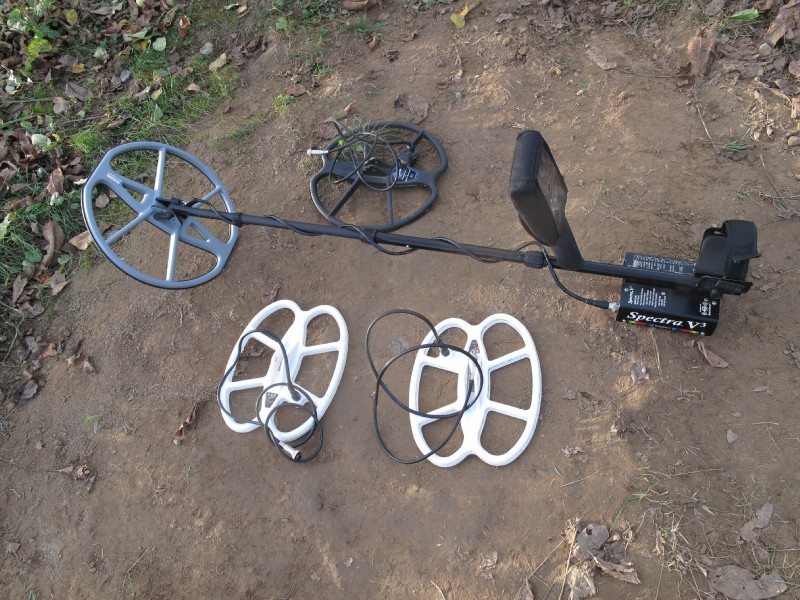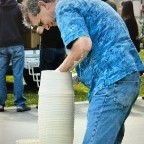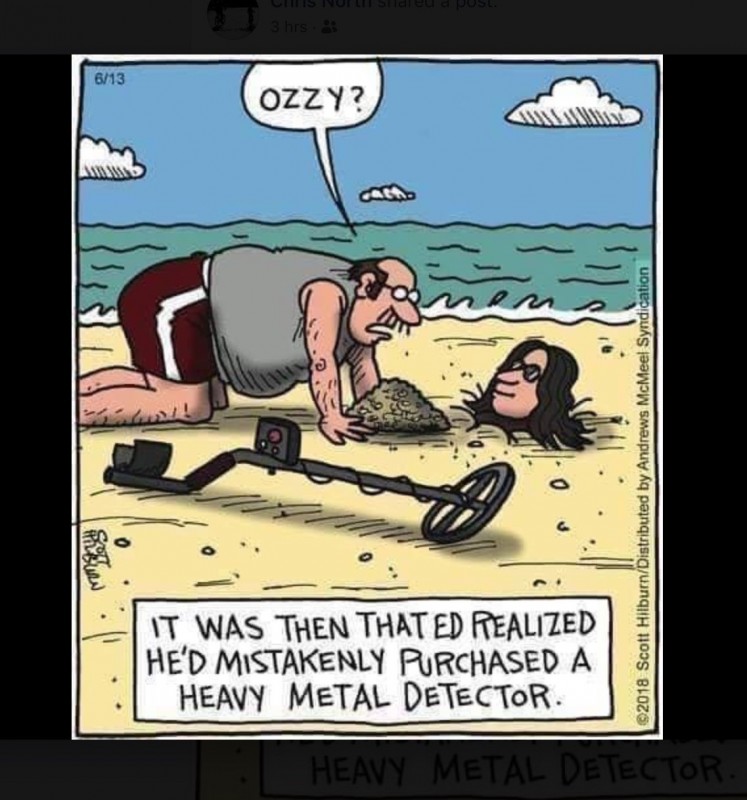Leaderboard
Popular Content
Showing content with the highest reputation on 12/09/2018 in all areas
-
I was just updating links and realized I have been posting adventures to Steve’s Mining Journal for over twenty years now. The Journal started when the internet was new, and information about metal detecting and prospecting for gold was new and rare. Metal detecting was still an obscure activity and gold prospecting even more so. I started posting the stories on my old company website as a way to show people this stuff really works and to help promote the business. It was one of my better decisions, as documenting these adventures has turned out to be far more important to me than anyone else. Memories fade with age, and I can’t do this stuff forever, so it is great now to have all these adventures to look back on. Anyway, many people never leave the forums and explore the rest of this website, so I thought I would post this to celebrate the unofficial 20th anniversary of Steve’s Journal for those who have never wandered across it.6 points
-
Although I first searched for native gold with a detector in late 2015 (3 years ago) I've really only been able to spend less than 75 hours in the field due to the distance I live from detectable gold. Add to that the fact that even though I've spent a lot of time reading about how to find gold with a metal detector I really didn't know what I was doing. All that changed last month when I took Gerry McMullen's in-field training class. "All that" includes what I report here. I'll be creating a separate post reviewing Gerry's class so I'll only quickly set the stage now. Rye Patch, NV, north central part of section 17 -- 32N32E, a location that has seen more than its share of detectors of all types. I brought my Equinox 800 and (at the time) new 6 inch coil fitted with a homemade polycarbonate skidplate (copied from Steve H.'s design for his 11 inch coil). After 3 days of training I stayed around for an extra 2 days on my own (actually, Earl from Idaho also stayed and we compared finds during and at the end of each day). On the last afternoon of my last day, hunting only about 50 meters from the location where the 'classroom' part of the class was conducted, I got a familiar signal and scraped off about an inch of soil with my boot, finding I had moved the target. I say 'familiar' because I'd been digging tiny foil (cigarette pack?) pieces, tiny wire, and lots of bullet shards for 3 1/2 days. I was in Gold 1 mode, threshold = 8, recovery speed = 4, iron bias = 6, ground tracking, sensitivity = 19, using the WM-08 module attached to SunRay Pro Gold headphones. I got an ID of +1 which I had been told by the instructors was where much of the Rye patch area small gold was hitting on the Eqx 800. The signal was loud and clear. Expecting another piece of lead I was surprised to see a faint yellow color on the recovered piece. I noticed Earle was near his campsite and I tried to hide my excitement when I showed him my find. He (diplomatically) told me he wasn't sure that it was gold based upon both its color and a scratch on one face. His alternate theory was that I had found a piece of brass bullet jacket. I countered with the fact that it wasn't at all jagged (like most bullet fragments I had found) but in fact had the rounded characteristics of metal that had seen a lot of natural (water, wind) wear. But I certainly took his concerns to heart. I returned to the 'patch' ? with a couple hours remaining before sunset. It took me the full two hours but right before calling it quits I got another solid +1 ID, this one about 2 inches deep, that also showed the sought after yellow color, this time more pronounced (gold-like) in color. It was a smaller piece but also showed weathering. As it turned out, my 'backup' find was needed. I didn't get home for another week, and then after weighing both pieces I decided I needed some under 0.1 gram calibration weights for my milligram scale so another few days went by. When I finally was able to calibrate the scale (it was pretty close to being accurate, within 1 mg at the low end of weight) and after fumbling around making a sling to hold the larger piece I found the following: Larger sample (1st piece found) had a dry weight of 171 mg (just over 2 1/2 grains) while the smaller weighed in at 121 mg (about 1 3/4 grains). That was the good news. Repeated measurements of the larger piece suspended in water gave a displaced volume of 16 microliters (from a dry vs. wet difference measurement of 16 mg). Dividing that out gives a specific gravity of between 10 and 11 (with an uncertainty in the neighborhood of 1 on this scale), definitely nowhere near gold. In addition, I later accidentally broke the larger piece into smaller pieces. Gold doesn't break. Although a specific gravity measurement of the smaller piece could be done, this would tax both me (trying to get it into a thread sling) and my scale, which would likely give a single digit reading (that is, < 10 mg displacement weight) for the divisor and introduce even more uncertainty into the calculation. Of course maybe I'm afraid to know the truth. One positive sign is that I tried to break the smaller piece (using my fingernail -- that's what broke the large one) without success. So, what is the imposter? I don't think it's iron pyrite since it gave a strong metal signal and ID of +1 on the Eqx. It could be some kind of alloy, possibly of copper and silver (but are those found in native form in Rye Patch?) or even some kind of Au-Ag or Au-Ag-Cu (electrum?) alloy. But, regardless, if my specific gravity measurement is anywhere close it can't contain much gold. The photo shows clearly the difference in color of the (original) two finds. (Oh, even though my find was half a world away from Australia I thought it might be good to put things in perspective for those Down Under who aren't well versed in the size of our US dime.) The upper two pieces are the remains of the broken larger piece. I did lose about 14 milligrams in smaller fragments when it broke and those were scattered on my dirty workshop floor. (Good luck finding that 14 mg amongst all the metal shavings, even with a detector. I'd have to sweep the floor and pan the refuse!) I'm interested in reading your opinions, both of what the larger piece really is but also whether you think the smaller piece looks legit.4 points
-
Righto, no worries, all that lovely liquid sunshine is falling here at present, with the wet here have nothing gold related to post, tis mushroom season and if you`ve had a feed of freshly picked field mushrooms you know they are the nuggets of the NQ wet. Saying that I`ll post some eye candy to keep our fever bubbling...…...4 points
-
I’m new to detecting, about 6 months, I bought an Equinox 600 and it’s a great detector, But wanted a simple machine to keep in the truck for when opportunity arises for a quick hunt and wanted something that works on our horrible Canadian clad, research pointed me to the inexpensive Compadre, couldn’t be happier, love using it, always puts a smile on my face and it does finds the goodies!4 points
-
Those of you who frequent this forum (especially the general gold forum) are familiar with posts by Gerry in Idaho (https://www.detectorprospector.com/profile/182-gerry-in-idaho/) who among other things is a full-time multiline dealer with 40 years of metal detecting experience and 20 years detecting for native gold. He conducts four 3-day training classes each year, two in central Nevada (Rye Patch) and two in Southeast Oregon. The tuition varies depending upon whether or not and which detector you've bought from him. You can see the details on his website (http://gerrysdetectors.com/training/), on one of his Ebay ads (e.g. https://www.ebay.com/itm/Minelab-GPX-5000-Metal-Detector-with-7-Coils-3-Days-Gold-Nugget-Training/273599397260?hash=item3fb3cb7d8c:g:2zsAAOSw5tNb-KBu:rk:1:pf:0&LH_ItemCondition=3000) or by calling him. He hasn't asked me (nor did he know until I told him in an e-mail today) that I'm writing this review, so everything here is strictly my view/opinion from having taken the class. Everything is from memory so there may be some errors but I'll count on responses from others in attendance to correct my inaccuracies. Overview: The class consists of one day of 'lecture' and two days of 'lab' (in-field experience). Gerry himself conducts most of the lecture part (Lunk: https://www.detectorprospector.com/profile/401-lunk/ talked about coil design and applications) but the meat is the hands-on training for which is provided an expert staff of assistants. Each day consisted of (approximately) 9:00 AM to 5:00 PM contact with 30-60 minute lunch break. Demographics: There were 16 students in attendance (18 signed up with 2 no-shows) and a total of five instructors (besides Gerry and Lunk: Scott, Mark, and Spencer) for a very generous 1::3 teacher to student ratio. The 16 students were from the following states (I may have missed a couple): California, Nevada, Montana, Arizona, Utah, Colorado, Texas, South Dakota, Illinois, Indiana, and Virginia. My estimation of age split is two younger than 50 years old. (I'd like to think I, at age 65, was about the median but probably in the highside tail....?) All were male although some brought spouses/significant others. Four of the five instructors were from Idaho and the fifth from Nevada. (I think 2/5 were under 50 but I may be being generous. ?) We wore nametags with first name, state of residence, and detector. Location, etc: Many here are familiar with the Rye Patch area, a high (4000 ft elevation), relatively flat desert with little vegetation. The site of the actual class is only 15 miles driving distance from the I-80 superhighway and all but the last 1.5 miles are on maintained 2-lane 'gravel' road. One student actually arrived daily (by commute from nearby town) in a 2wd compact (Ford Escape?) which was likely challenging over the last 1.5 miles of rutted single lane road. The area where we met had several 'primitive' (no ammenities) camping spots and about half the attendees took advantage of that, all the way from tents to fully-outfitted travel trailers. The weather was quite cooperative (typically mid-60's and sunny daytime but freezing or lower overnight) with no precip. The lecture part was outdoors with seating provided. No sound system (but Gerry didn't need one). Requirements: basically few, but you were allowed to train on one detector (pre-approved to make sure at least one instructor had familiarity with it) and any accompanying family members could sit in the lecture but otherwise would receive no field training. Detectors: nine students brought the Minelab GPZ 7000, three brought Minelab GPX's (mostly 4500's but I think there may have been one 5000) and one SDC 2300, 1 1/2 White's Golmaster 24k and 1 1/2 Minelab Equinox 800. (1 1/2 because Gerry made an exception on the "one detector per student" rule for someone to train one day on each.) Day 1 Lecture: began with personal introductions of all 21 (students and staff). Gerry related some of his many experiences in the morning session, including lots of detector info. Afternoon began with explanations equipment he brought for sale (and why he stakes his reputation on them) then continuation of general detecting advice. The day ended with a demonstration of how the various technologies (PI, VLF, ZVT) respond to various types and sizes of native gold in air tests. Much of the day was a review for me since I've read a lot of articles, forum posts, and books on finding gold. The highlight was the last part where the different gold specimens were exposed to the detectors and the responses (or lack of such) were demonstrated. Days 2&3 lab / hands-on experience: As mentioned above, this was for me by far the most valuable part of the course. Students were split into five groups (typically 3 per group) and assigned instructors for anywhere from 2 to 4 hours of personal training. The division was by detector type, so there were three Z7000 groups, one PI group, and one VLF group. The instructors were rotated such that each group experienced the expertise of each of the five instructors. Their styles varied but I learned something from each. For example, it was interesting to see the different setups preferred between instructors for the same detector (in my case the Eqx 800). One added feature is that if a student got a promising signal (verified by an instructor) the others were given the option of watching the dig and (more importantly) trying their own detectors pre-recovery to monitor the response. Day 2 training was close to the lecture site and day 3 was another part of the area. Summary/Conclusion: I was one of the few who paid the full tuition (since I had not bought my detector from Gerry) and it was worth every penny. The comaraderie was great (kind of like on this website ?) with (as far as I experienced) no bickering and a lot of encouragement and support among the participants. There was not a weak link among the instructors. I was left wishing for more, but that only emphasizes my satisfaction of 3 full days of instruction/training. I think a majority of GPZ swingers found gold but the rest of us (PI's and VLF's) drew blanks (well, until the encore, for me: https://www.detectorprospector.com/forums/topic/8195-lost-my-gold-virginity/).3 points
-
I learnt a bit of lingo too, apparently these southern folk get upset being called Yankees. It’s a bit like telling a Queenslander he has to wear a blue jersey. I compromised and dropped two letters so now it’s just ‘The Yank’.3 points
-
I was there, one of the under 50 guys GB's write up is spot on. Excellent class and had a lot of fun. The main thing for me was asking questions. Come with lots and lots of questions. Its your chance to ask directly, get advice, and see with your own eyes any of the things you might only read about. With all the questions I asked and all the new techiniques I learned my confidence as a good detectorist increased exponentially! Also it was fun to meet other detectorists and hunt with them, bounce ideas, etc. I have no detectorist friends where I am from. Finding gold on your own is not as much fun as to share your finds with someone immediately.3 points
-
Had a great day out last weekend. Temps got close to 60, but still had to use the wet suit heater. Definitely a worth while trip, with some nice coarse chunky gold. Most of the gold was found caught up in a quartz vein. Hard to tell if it actually came from that vein or just got caught there. Will be crushing some of the vein to see if anything comes out of it. Either way the gold did not travel far at all which has been typical of all the gold found in this stretch of creek. Hopefully ill be able to dredge there one more time before the end of the year. Currently sitting at 0.90 oz for the year would love to get that last 0.1 to make an ounce for this year. We will see.2 points
-
Thanks Steve for your great insight 20 years ago . It's great living and Detecting in Australia and being able to glean so much help and info from you and your fellow forum members . I'm thousands of miles away , yet I feel like I'm next door . Cheers and here's to the next 20 years . goldrat2 points
-
Most tours are already full , but you can try to get in to the tag alongs--- there is most likely some open somewhere in OZ-- but WA is not where you want to be--- too many snakes and bung-arrows,,, deadly beasts of all sorts.... yeah--Golden triangle is where its at ,or better yet Queensland ---- (tongue in cheek)2 points
-
Stuffed full of good information...I have always enjoyed your adventures! thank you very much fred2 points
-
Following up on my post above, I bought the LS Pelso WP headphones. I don't ever expect to dive and only wanted a good set of WP headphones for fresh and saltwater wading where I may have to dip my head under water to scoop a find or possibly rainy day detecting. The Pelsos have excellent sound, the cord length is good for me, they are comfortable to wear for long periods and the price is reasonable.2 points
-
Congrats on the two pieces of gold! Gerry and his great crew got me started as well. strick2 points
-
Looks great Steve! I did some playing with my Nox and dug out some of my archery gear. I figured out if I moved my arm cuff forward, that I could get some of my stabilizer weights and attach them via the last hole in the shaft, behind the cuff. I ran a threaded bolt thru the hole and attached weights there. Thus far I have 12 ounces of weight on the back and with the 12x15 coil, it seems to counter balance it close...I actually think a few more ounces might be better for it. I think it would be too much for the 11 inch coil...probably just need 8 ounces for it. This will vary on the overall length that a person uses too. On the stock Equinox setup, I am in the 3rd hole down from the cam lock. Once you get your full setup ready it will be interesting to see what weight options everyone favors.2 points
-
Thanks so much!! I was totally looking in the wrong place for the adjustment. These are different than all the other headphones I've ever used that have the sliding bands. Neato...each individual ear cuff can adjust. I have it set perfect now. On the cable length, I'm just a little taller than you, 6' tall without shoes but it is a smidge too short for me. It always pulls the slack out of it and is pretty taunt at just my normal swinging height. If it were any tighter it would pull them off my head. Audio wise, I like them better than the wireless phones for normal everyday detecting. I may pick up a pair of the Patriots to try them out. Tony's are the best thus far between the yellow Minelabs and the Gray Ghosts, in my opinion.2 points
-
2 points
-
I have been doing reviews of various gold prospecting metal detectors for years. I also have maintained a Guide to Gold Nugget Detectors that summarizes and links back to the detailed reviews. That's fine, but this website has branched out into all things detecting, and my reviews are limited to one niche of the metal detecting world. I also find I have an ongoing need to link to metal detector specs, and having a complete database of detectors past and present can help me as we go along. The main thing however is I am hoping to get a good user review database going. Long story short I am working on a new Metal Detector Database With User Reviews. I have created a simple framework, and am putting basic specification information in for current metal detector models. The detectors are listed alphabetically by manufacturer and model. There are basic specs highlighted - internet price, frequency, weight, waterproof or not, and whether the detector is a current model. You can use the "Sort By" function to sort the entire list by any of these criteria. The heart of it all however is the ability of each forum member to leave a "Five Star Review". You rate the detector overall - one star is poor, five stars superb. You can do a written review, hopefully one that simply says what you like most about the detector, and what you like least. I prefer this be kept clean and useful for others. This may or may not turn into anything as it really depends on all of us. The more reviews that get left, the more useful it will be for everyone. I am plugging basic specs in but as I get caught up I will go back and try and make each entry a compact listing of information about each model, possibly listing common accessories with part numbers. I already am linking to manuals etc. That way when somebody posts in the future about a detector, links can be made to the appropriate database entry so people can get more details. You can figure I will be doing a lot of that cross linking so it's not something people need to do unless they want to. Finally, when that all gets caught up, I will start working backwards and add discontinued models. I will stick with more popular stuff at first, getting more obscure over time. In a few years this could be a really great resource. I will be building the database regardless. Many of the entries are just placeholders at the moment, but if anyone wants to please feel free to place some reviews. It might help me tweak the system, and I am open to suggestions. As always there is only so much I can get on screen at one time, so the specs I highlight and such are limited more by screen space than anything. Check it out at Metal Detector Database With User Reviews. I will rejigger the menu structure in the future to make this easier to find but right now it's a little off the beaten path.1 point
-
Congrats, I have seen a lot of native gold that would break as Steve pointed out for various reasons. I know a guy that had a half ouncer that was put on a bail for a neckelas. What seemed like a solid nugget through the years of wearing it flaked a lot of gold off of it.1 point
-
Hi Steve, Congrats on your 20 years and thanks for all the work and info! ? Greetings, Bob'ke1 point
-
I'm already getting the fever to be back---please do not post anything else until April....1 point
-
1 point
-
Mark Hyde is a great guy...too bad he quit his all-inclusive Tours... fred1 point
-
1 point
-
Rick, For a minute there I was thinking Monte had changed up the Nail Board Test and I was going to have to sell all of my detectors and replace them. ? Rich -1 point
-
1 point
-
1 point
-
Forgot to add: Does your rod use the OEM cuff or do you supply your own?1 point
-
I have always heard good things from people I meet about Gerry's sales and service. I have not personally had any dealings with Gerry. I have been out in the field prospecting for over 10 years now. So many people think a detector does not have a learning curve. It beeps when it's over metal, how much more to it could there be?...haha after 3 PI machines and running a few VLF's besides the one I own, I can tell you there is much to learn about running a detector, let alone looking for gold with one. If you can attend a class or get out with a experienced nugget shooter, your going to be more successful!!1 point
-
You guys hit the nail on the head. I read somewhere once that the one big secret to successful nugget shooting is that there is no one big secret; it's many things combined, including technique, location, persistence, etc. And I know from experience that the sum of all those things is an emergent confidence: confidence in your ability to operate your detector, confidence in your detector, and confidence in the ground you are searching. When you attain to that level of confidence, you’ve truly become a successful nugget shooter and the gold finds come as a matter of course.1 point
-
1 point
-
Ok, Brian, you confirm I got at least one of my age conclusions correct. Yes, I agree 100% that the main takeaway from the class is confidence. That always sounds so simple but it is probably the most difficult thing to accomplish, especially when learning on your own.1 point
-
You can adjust each cup, they slide up and down about an inch, look on the inside of the arms where they attach to the cups. I find the cord cord long enough ( I’m 5 10 ) I have used them underwater with my diy 12v hookah and they are loud enough for me but louder would be better.1 point
-
Who's that waaaaay down there hunting along the River Stour? That's Steve! I just realized that I never commented on this thread. Sorry about that! That's a great write up on your trip Steve! And some great pictures to go along with it! I should've stopped to take more photos and videos than I did. And! I wish I would've got the chance to look at your votive offering that you found while I was there. But the powers that be swoop in pretty quickly with the gold items! It looks as if our paths may cross again my friend! Hopefully we'll be blessed with another nice long stretch of awesome weather again!! Until then, dig deep and dump high, may there be a killer find in your path! Congrats on your finds! ?1 point
-
Yes. Tony's are white and are good phones. If you just want something that has good volume and a long cord that can withstand the elements and take a dunking or two, I highly recommend the LS.Pelsos sold by KellyCo.1 point
-
I don't like to dish dirt on an otherwise superb detector and to be fair I have a sense that if my bench tech had replaced the side clips too there would have been no problem after the repair. With the R & D that' must have gone into the CTX Im surprised that this has not been addressed more soundly. This second gasket is not even captive--it just sits on the outside of the case--nothing some black tape wont accomplish. My fix did work today something for anyone who has had a leak to try: Take the lid off a water bottle and cut out two rectangles 1/32 x 1/8". Get some tweezers and some crazy glue or mix epoxy. Put a puddle of glue on a surface, pick up each shim , dip it and place each one exactly on where the cell clip seats--on the battery holder. Trim with nail cutters. Use the clips to clamp for drying. This will make for a firmer seal. Be sure to use an (strong) elastic to secure the clips now. Then, to keep the sand out--apply two strips of black tape--top and bottom. Just funny--Im run this machine for periods of time problem free but then it has leaked several times in a row no matter how hard I try to make sure that everything is situated perfectly. This fix seems so far so good--two rechargeable cells later... PS scored this Italian cuff today18k 9.7 gt. seems to be working! cjc1 point
-
SW wind, 10°C .. I took the chance to get out again. The water had been gone ~60m, so I've detected on the wet sand. Some junkers , an old swimsuit pendant (pretty big ?!).. and two nice coins! 50 Pfenning from 1920 wow.. what a great condition for beeing stuck in the mud for almost 100 years! It's made of aluminium. The second coin is a "10/100 voucher coin" - 1923. It has been used for about 1 year after WW1. I ran the nox in beach1, sens at 22 and it was super quiet - no falsing at all, very impressive. "Sich regen bringt Segen" - "To stir (to move?) brings blessings" Hmm.. hard to translate.. but you get the idea1 point
-
1 point
-
The GPX manual says not to remove or change coils with the control box on, or you could damage the circuit. I have heard of guys doing this and blowing something on the circuit board.1 point
-
Enjoyed the video,i have used a GPX but i do own a TDI Pro,for my detecting needs which is mainly inland sites that have a very high mineral content then the only detector that will work on this and surrounding permissions is a Pulse machine and the machine that ticks my needs and requirements is the TDI,almost all the time i run it in low conductivity as most of my desired targets are silver hammered coins and celtic gold coins as well,and using low conductivity works a treat and very rarely do i dig iron,small iron is almost totally eliminated like nails etc,of course large iron objects like horseshoes then almost all machine including VLF will show these large items as decent ones. Great video,could not see after a very long period of research see any major advantage that the GPX would give me over the TDI especially for our finds here in the UK,for me it all boils down to the reward to cost ration on my sites and it just did not stack up in favour of the extra cost of buying a GPX.Of course just a personal opinion1 point
-
Both look like gold to me but the above pieces seem to be in a matrix. Could be quartz could be cliche. Try soaking in CLR, if its cliche it will dissolve off. Congrats on the double find! Welcome to gold fever!!!!1 point
-
Crikey, Paul, couple more training seasons and you`ll be a full blown convict, cultured good enough to be a Queenslander. I`ve had a query from a local here about that Yankee "tenant" that speaks "double dutch", said he had a good yack to you while you were hunting coins. All good fun...……… but sounds like our lingo is a definite no - no in the US.1 point
-
1 point
-
Well, you are asking for a typical TC, which I am assuming is Time Constant. Most people here will be thinking in terms of target id numbers. Remember these are natural objects. A nugget can be 90% gold, 60% gold, or 10% gold. That alone will send conductivity all over the place, with pure gold being the best signal. Adding silver to gold does not raise conductivity as people assume because alloys do not conduct electricity as well as pure metal. Silver is a far better conductor than gold if both metal are pure, but adding silver to gold reduces the conductivity and therefore the time constant and target numbers are reduced. The gold can be solid and round, or solid and flat as a pancake. The shape not only will change everything but also the orientation in the ground. The gold can be solid or it can be porous. Porous gold is usually invisible to PI detectors. It can porous due to air spaces or porous due to enclosed minerals. If the enclosed minerals (iron sulphides for instance) have electrical or magnetic properties that will change everything. Suffice it to say that gold is a mess when it comes to how it reacts with a detector. Most of us do not use test nugget based on mesh size but on weight. I usually use a 1 grain nugget (480 grains per Troy ounce) to test VLF detectors. A PI will not normally detect that, so I am normally going to use a quarter gram or half gram nugget to test a PI. There are 15.43 grains per gram. I just weighed a few 8 mesh nuggets, and they were from 1 grain to 4 grains in weight. That will definitely present a challenge to a PI, with some probably being detectable with a hot PI, and some not. Just depends on the above factors. Here are a series of test nuggets and target numbers for them I did. The gold is larger but shows how the numbers vary with size and purity. Size Equivalents Two scales that are used to classify particle sizes are the US Sieve Series and Tyler Equivalent, sometimes called Tyler Mesh Size or Tyler Standard Sieve Series. The most common mesh opening sizes for these scales are given in the table below and provide an indication of particle sizes. The mesh number system is a measure of how many openings there are per linear inch in a screen. Sizes vary by a factor of √2. This can easily be determined as screens are made from wires of standard diameters, however, opening sizes can vary slightly due to wear and distortion. US sieve sizes differ from Tyler Screen sizes in that they are arbitrary numbers. US Sieve Size Tyler Equivalent Opening mm in - 2½ Mesh 8.00 0.312 - 3 Mesh 6.73 0.265 No. 3½ 3½ Mesh 5.66 0.233 No. 4 4 Mesh 4.76 0.187 No. 5 5 Mesh 4.00 0.157 No. 6 6 Mesh 3.36 0.132 No. 7 7 Mesh 2.83 0.111 No. 8 8 Mesh 2.38 0.0937 No.10 9 Mesh 2.00 0.0787 No. 12 10 Mesh 1.68 0.0661 No. 14 12 Mesh 1.41 0.0555 No. 16 14 Mesh 1.19 0.0469 No. 18 16 Mesh 1.00 0.0394 No. 20 20 Mesh 0.841 0.0331 No. 25 24 Mesh 0.707 0.0278 No. 30 28 Mesh 0.595 0.0234 No. 35 32 Mesh 0.500 0.0197 No. 40 35 Mesh 0.420 0.0165 No. 45 42 Mesh 0.354 0.0139 No. 50 48 Mesh 0.297 0.0117 No. 60 60 Mesh 0.250 0.0098 No. 70 65 Mesh 0.210 0.0083 No. 80 80 Mesh 0.177 0.0070 No.100 100 Mesh 0.149 0.0059 No. 120 115 Mesh 0.125 0.0049 No. 140 150 Mesh 0.105 0.0041 No. 170 170 Mesh 0.088 0.0035 No. 200 200 Mesh 0.074 0.0029 No. 230 250 Mesh 0.063 0.0025 No. 270 270 Mesh 0.053 0.0021 No. 325 325 Mesh 0.044 0.0017 No. 400 400 Mesh 0.037 0.00151 point
-
Jim, The short answer is no. The main point of the video was to demo the sounds of the pulse machines with a short example of why I prefer one to the other. The sound of the TDI on a bobby pin is the same on the TDI longways or however you want to pass it across the coil. With a nail, if you hold it a certain way, you can get it to respond on the edges of the coil and not in the center, and if you whip it rapidly by the coil, you can get it to give a double beep. That's what I would do in the field with the TDI before I got a GPX...circle all around the target and speed the coil up really fast. If I ever got it to give a double beep, then I reasoned it was a nail and moved on. If the nail was bent or rusted more on the head...you wouldn't get the double blip. I've owned all generations of the TDI...from the Pro, to the regular big box (even the tan colored box through hole design), to the SL and the one in the video was the new Beach Hunter. IMO, a mono coil seems to help this somewhat but the stock dual field coil makes it tough to ID a nail. Not sure how the mono coils handle bobby pins...the Beach Hunter version is the only one I have tried on the beach, and you are stuck with the 12" DF coil for now. On the GPX side of it, on the bobby pin I can get it to entirely null on it or to give that slight high warble sound with the way it is held. On the nail, if its within a few inches of the coil it nulls on it no matter how its held or oriented. The distance from the coil seems to matter most...and how aggressive the iron disc is set. If its set too low then it is more easily fooled by deep iron. At the same time, if it is set too high, then you can pass over deep non ferrous targets...it will blank those out. I tend to balance it. I try to run it as low as I can and try to find the breaking point of it at each site. If I'm getting fooled by too much deeper iron, then I will bump it up a number or two.1 point
-
One bottle cap two boot tacks and a target I could never find. Sorry it’s as near as nothing you can get! Chuck1 point
-
1 point
-
I got out for 3 days to Gold Basin. The first day was a skunk but then at the end of the second a little color. I got up at daylight on Saturday and found a couple of meteorites before 8 AM. Then on a long walkabout I found a mini-patch of 3 pieces. Later on a 5 mile walk I found a 15g sunbaker meteorite. It is nice to get even small results with the 7000/14. Mitchel1 point
-
1 point
-
1 point


.thumb.jpg.77e4cb5bf39d44bdd2050d2edb7dfdb1.jpg)

